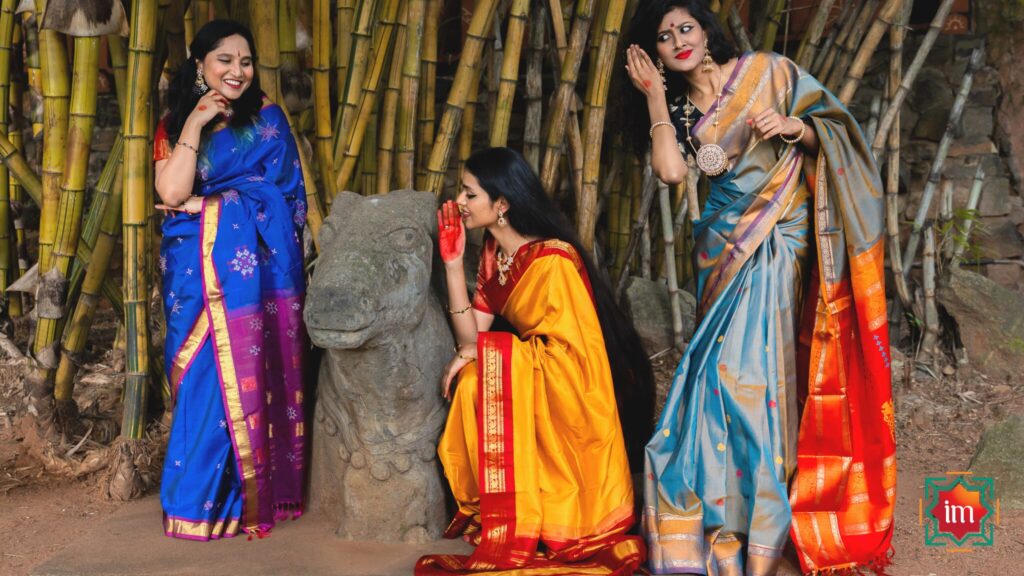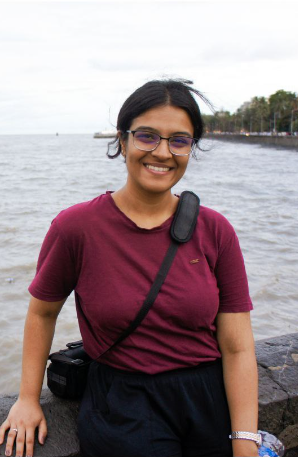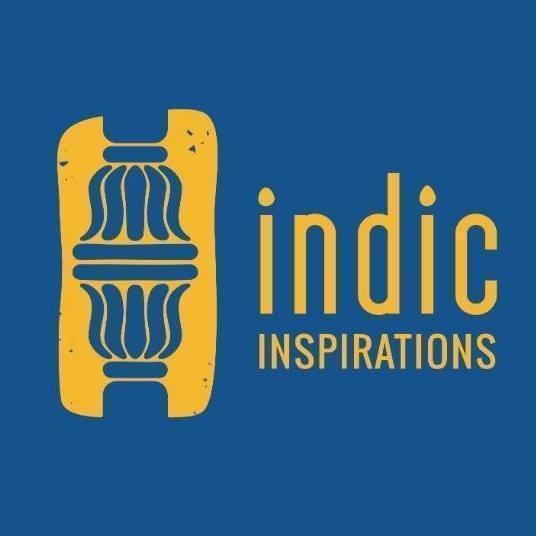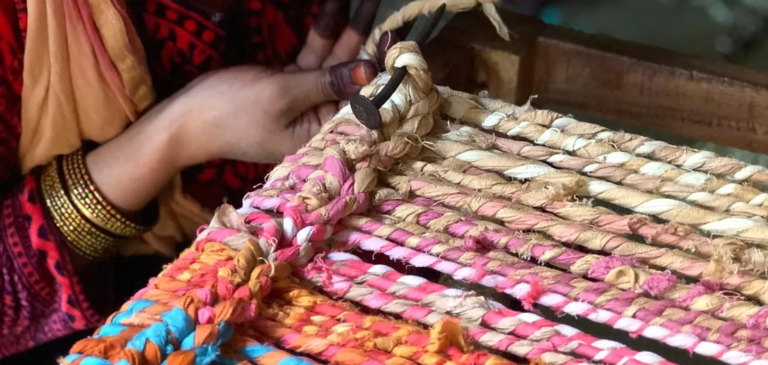Handlooms are integral to India’s cultural identity. From Kashmir to Kanyakumari, India is home to diverse and unique styles of handwoven fabrics and designs, which reflect a region’s geography and culture. Every handloom style speaks its own language without any words. The stories behind handlooms are perennial, each carrying its own tale of inspiration, a piece of history, or folklore.
The Indian Motif, a brand that took shape during the pandemic, has taken upon the vision to make the lives of handloom weavers and artisans financially viable, encouraging and rewarding them to continue their art and craft. Follow our conversation with its exuberant founder, Swetha Sunder, who believes her venture is an enabler by creating customer awareness and promoting handcrafted products to create a stable and sustainable demand for handwoven and handcrafted fabrics.
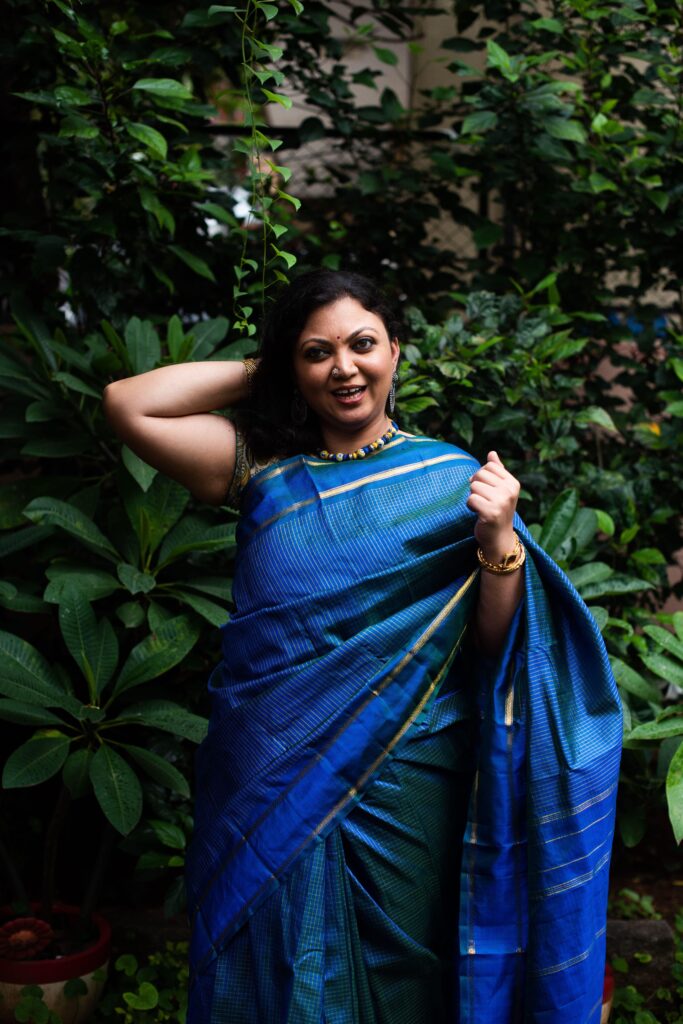
Jumping the Plane!
I was a hardcore technology professional for 17 years who worked in the Analytics and Artificial Intelligence space. Though it almost seems like a past life, I was always more comfortable and confident in draping my cottons and silks. Even during my B-school days back in 2014-15 at ISB, Hyderabad sarees just felt right.
I have been a handloom enthusiast for more than a decade. I started my journey of understanding and appreciating Indian handlooms by creating a small collection of handmade weaves for myself and continued this passion. I used to visit handloom clusters for leisure. I started seeing that a lot of my friends were interested in the stories and authenticity of the weaves themselves. I personally observed that even in those big saree stores, the older designs that reminded us of our mothers and grandmothers don’t exist anymore. The elegance of handloom sarees has kind of vanished. I was on a quest to understand the reasons behind this. Is it because people think of them as old-fashioned and therefore don’t ask for them anymore or because the sarees just aren’t to the modern consumer or were there other reasons? That’s how this whole journey began and I decided to ‘jump the plane’ in August 2020.
I began understanding the whole journey from production to marketing. I contacted certain weavers for a particular design or color combination for my own use. I discovered a handful of very skilled weavers in certain clusters who were struggling to gain the attention that they once used to command decades ago. As a result, they appeared to have lost their drive to effectively exercise their skills. In certain clusters, power looms had completely taken over handlooms. A weaver who has spent ages mastering his craft isn’t very enthusiastic about going and working on a power loom. That was something that kind of stayed with me.
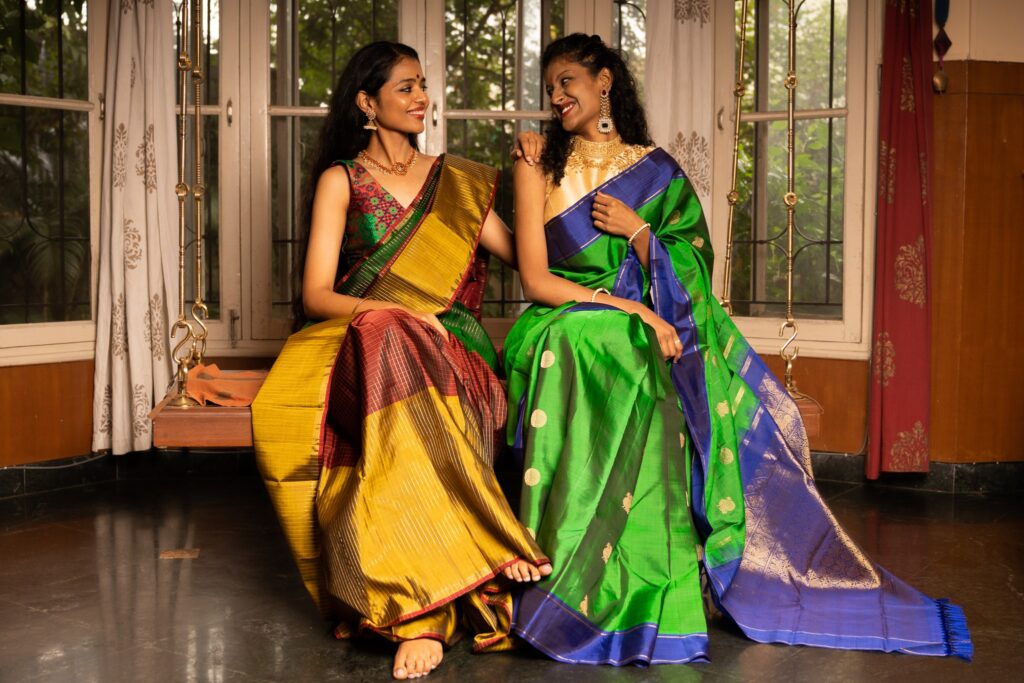
Passion and the quest for doing something for this community made me tread on this road right in the middle of the pandemic when people were worried and weren’t really buying handlooms.
The pandemic made us realize that extreme uncertainty about the future would remain and probably get worse and it was that realization that pushed me to start the venture as I thought: If not now, then when?
The Authenticity of the Handloom is Key
We started as an online brand since I am a techie by education, training and experience. I started by putting together my website on Shopify and soon went on to set up our Instagram and Facebook pages. That’s how our story started and we began with five clusters that I had visited, namely, Kanchipuram, Mangalgiri, Venkatgiri, Bagru, and Arani.
My first step was understanding the needs of the weavers. The need of the hour at that point in time was to help them ease out their inventory. There was no other pain point at that time. It was the pandemic and they were losing jobs and people. There was no question of innovation or any other intervention required.
Ours is an inventory-led model. We operate by sourcing inventory from the weavers and artisans, paying them upfront, and then selling the products. We are not a marketplace. In the social sector that we work with, marketplaces do not operate very well for them. Since we work with a lot of small weavers and cooperatives, the moment a piece is woven and kept, there’s a lot of risk of spoilage. For them, it needs to be out as soon as possible.
Over the last 2.5 years, we have been able to add around 37 clusters across regions with around 53 weavers in place. We currently work closely with weavers, artisans, weaver coops, and supporting NGOs.
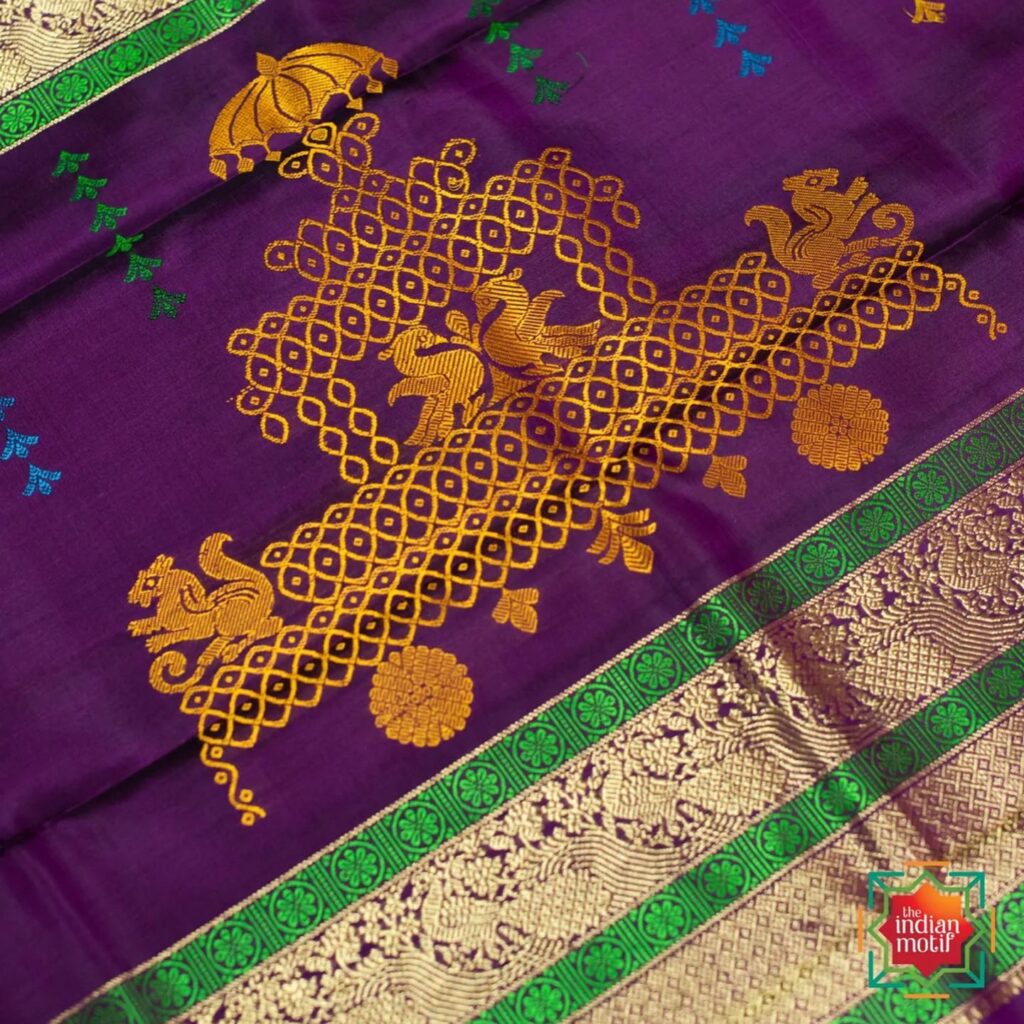
It’s a social sector in very difficult terrains and where it is very difficult to gain trust. It is very important to establish a strong sense of credibility when you work with such artisans. I connect with weavers by visiting them in person, however, during the pandemic we worked through references from one cluster to another. We didn’t want to dilute the authenticity of our source. We never want someone who was selling power loom products to us in the name of handloom. Authenticity is Key. And that’s what we want to bring to the market.
Why Handloom and What Makes Us Different?
One of the biggest challenges for us is the fact that there are so many handloom brands out there so how do we be different?
The way I look at it is the vision that we never want to sell any machine-made products under our name. Brands usually start out as a handloom venture but diversify eventually to include machine loom products. That is out of the question for us. There has to be an artisanal element involved in every product that we sell be it sarees, dupattas, kurtas and shirts for men, etc.
Why we are doing what we are doing because we want to create predictable demand and income for weavers. Normally, when we go to work, we know there’s a predictability of income for a certain set of deliverables every month. Imagine going to work where that amount is not known and can vary widely. How can one run a family with that kind of unpredictability? So one of the core reasons why we’re in this space is to create a customer demand leading to income predictability for the clusters we work with. So that the weavers are not worried about their basic livelihood. The reason for people leaving behind handcraft and handloom is because there’s so much fluctuation in demand and prices in the market. If a person knows that there’ll be a minimum income every month, the reason for him/her to leave the craft would minimize automatically.
We are not here to build short-term relationships with the artisans. We don’t say that we’ll source from you for a year and then vanish into thin air. We want to support them throughout and create predictable demand.
Handloom is Healthy
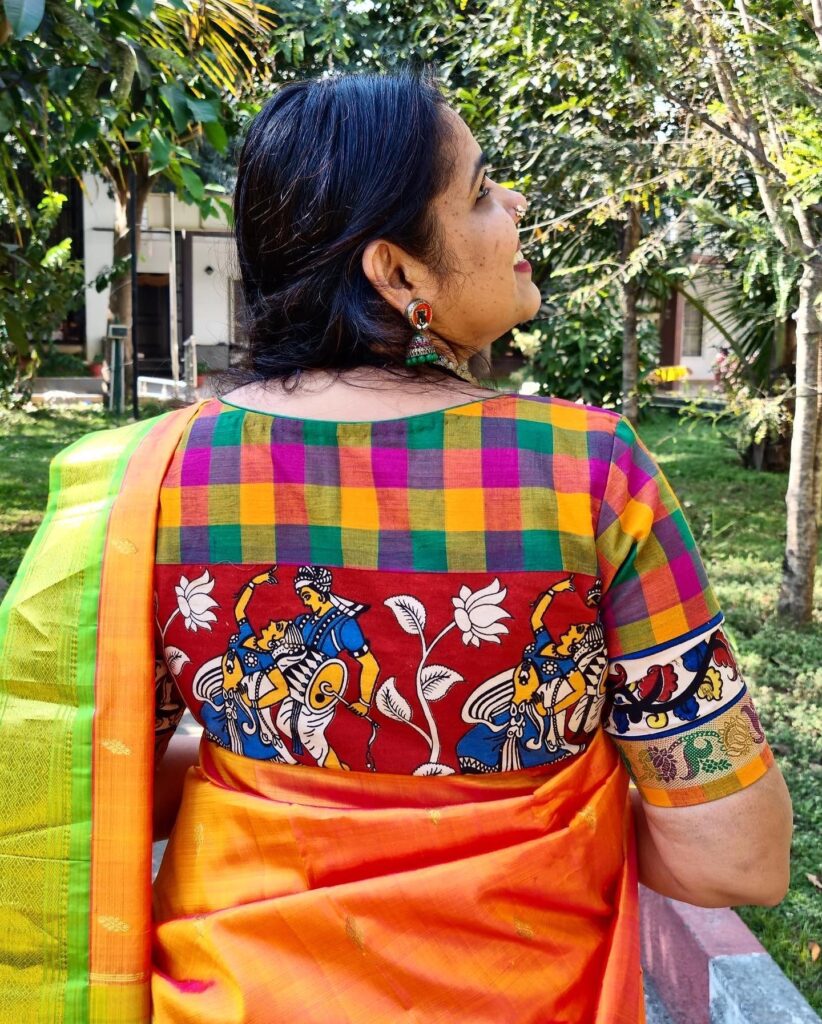
People talk a lot about following a healthy lifestyle these days, about yoga, and eating well and mindfully but rarely have I ever observed any emphasis on clothing. Healthy clothing is equally important with natural fibers and chemical-free dyes. It’s one way of taking care of yourself and adding to your wellness quotient.
Safe clothing with azo-free dyes is an equally important investment in leading a healthy life.
There are studies that say chemicals used in clothing are sources of diseases and that non-breathable fabrics can be harmful to our skin.
Our aim is to make people aware – You don’t need to buy 200 clothes every year. But when you buy, you buy Authentic.
Making Handloom Accessible to All
It’s been a fun ride. Our models that promote our products on social media are all dancers. We are very keen on associating with artists. My very carefully curated team includes those who have the courage to leave the mainstream and pursue their passion.
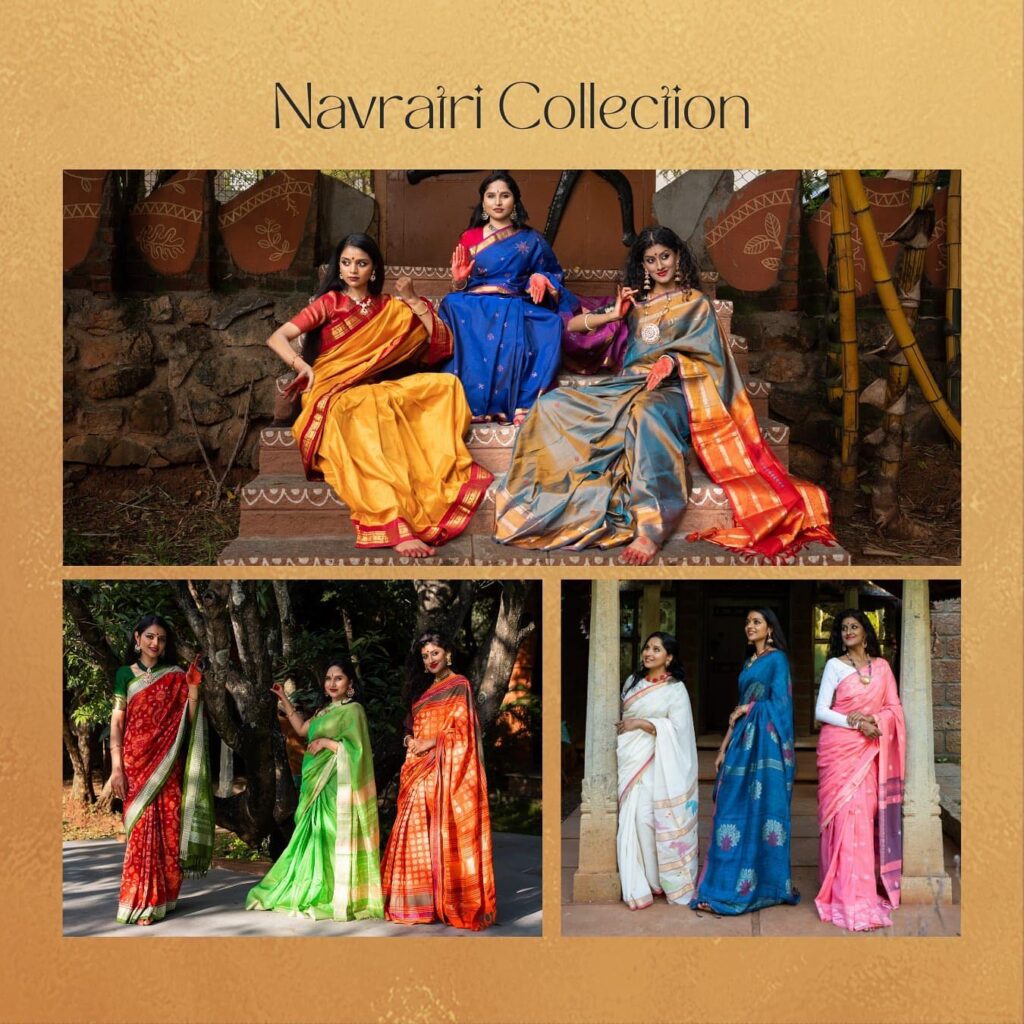
As far as customers are concerned, we started with a minimal base of friends and family. We have primarily grown through references which have been amazing for us and kind of validated our belief that we are doing the right thing. We have had a 100% retention rate. Our efforts thus have been only on customer acquisition. We know that our customers would come back. One of the main reasons is the product itself. We don’t compromise on procurement – no negotiations with the weavers. It acts as an incentive for the weaver to do more intricate work. The moment you negotiate, you bring down the value of the hand weave.
Second is our delivery experience. We want our customers to feel happy. We don’t want any post-purchase dissonance. We don’t want our customers to have doubts about the pricing or product or both. All our customers have come back to us with a lot of happy feedback and they have referred us to others. People have shown magnanimity.
Every saree in our collection is unique. Since it’s handloom, even if someone tries to weave the same design, there will always be slight differences. We don’t micromanage the weavers. We don’t want the core identity of the craft to be lost. So the designs depend on the weavers. Our intervention may be like – ‘Hey! I’d like more of Yellows and Greens this season or we don’t want heavy work on the sarees this time.’ Intervention only happens in our custom-made sarees of which the designs are done by us.
In our Jugalbandi collection – we reimagine traditional weaves like Venkatgiri. Typically it would interest older people, but we have introduced a bit of block printing with it, which makes an interesting combination and appeals to younger folks.
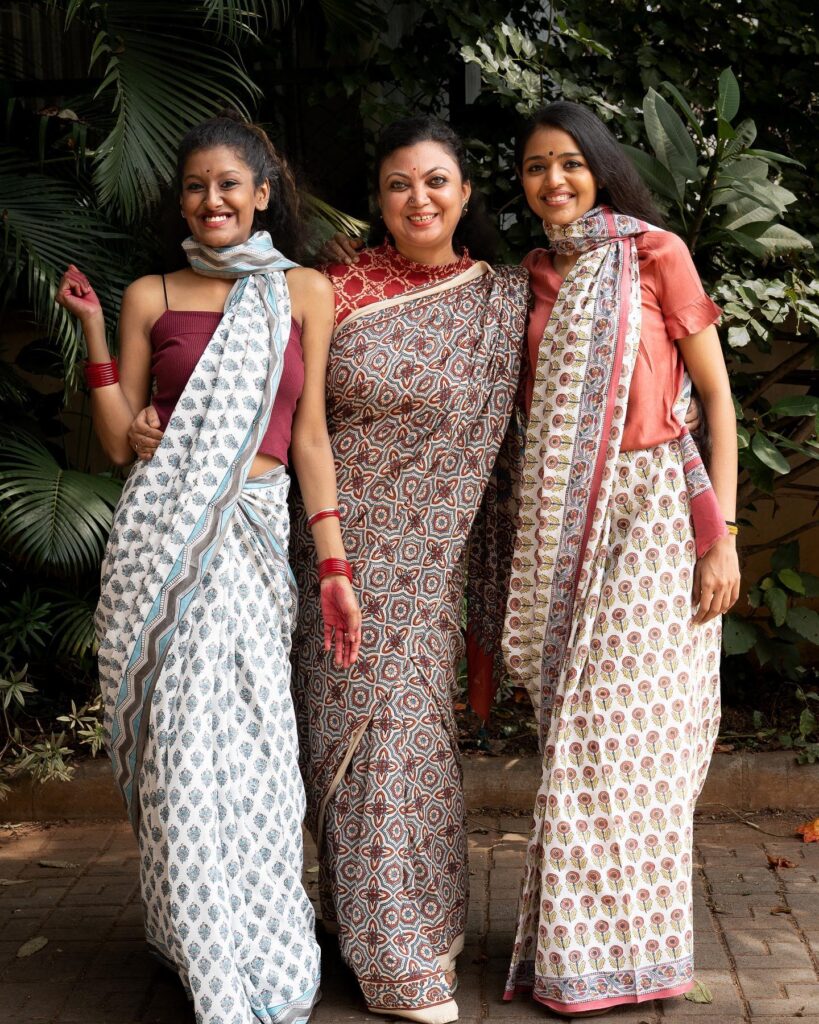
The Experience Store
We ship across the world through our online store. We opened our first store in June 2022 in Bangalore. It is not housed in a commercial center as that would not be aligned with our core principles. The store is in a serene environment meant to take you back a couple of decades – where it doesn’t seem like it’s 2023! The aim of the store is to let people experience how a handloom product would feel and look and was necessary for people to walk in, experience, and buy such products.
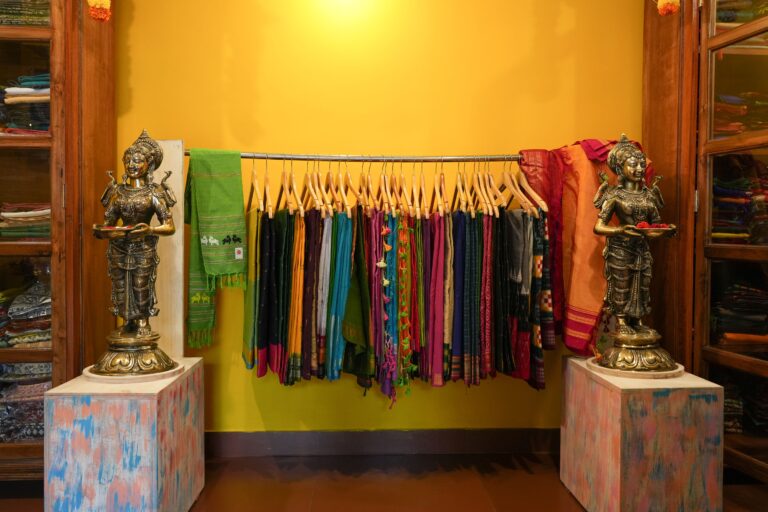
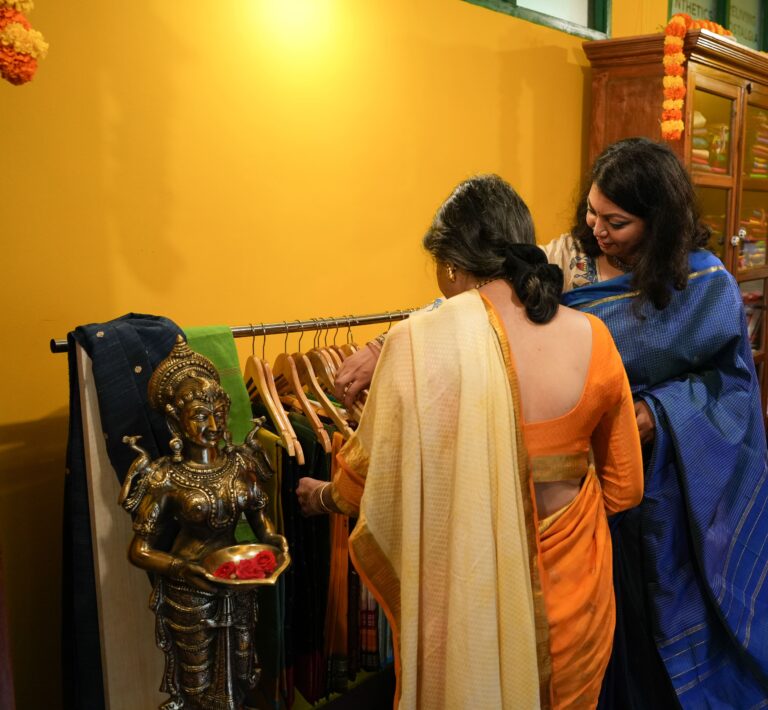
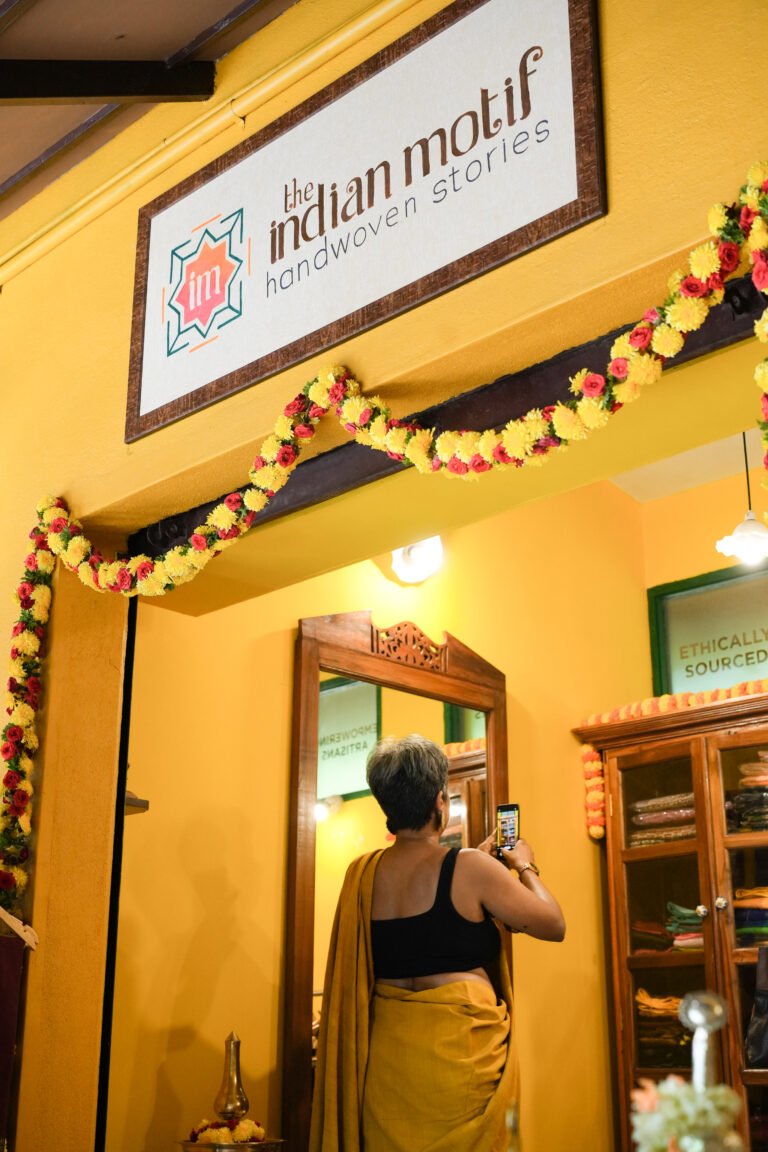

Previous
Next
Our aim is not to make our product elite. We want it to be accessible. The reason it’s expensive right now is that the handloom skill is dwindling. The moment we drive up demand, it might bring back the balance. We want everybody to have a handmade experience. We want people to buy it because they like it and not because I associate the product with a sad story of the weaver. You’ll do charity once but not over and over again. We want people to buy out of the joy and empowerment that they see in this purpose. That’s what is sustainable for us and in this category.
The Bigger Picture
Now that we are completely out of a global pandemic, we want to do much better and bigger. We wish to scale up and associate more closely with art and crafts. We do not just wish to be limited as a saree brand but integrated with the art of our country. We also are working towards meaningful exports of the best of Indian crafts. We want to do more events with artisans coming to the forefront. For people to understand the other side. They deserve respect for their work. We wish to celebrate the artisans and their work on the handloom.
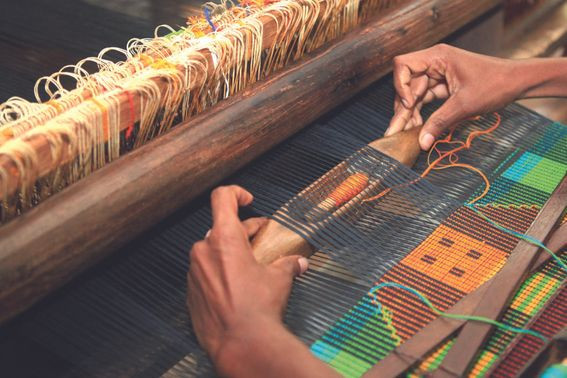
Image Source – Grazia.co.in
Building faith with the handloom weavers is difficult; to reassure them that we are here for the long run and won’t shut shop, especially in the new clusters. They have had 10 bad stories to share. We want to help them see the larger picture that handloom is beyond making ends meet. We want them to understand what their art means. I’ve had loads of human interaction which has been my favorite part of it. And now it is just about moving ahead.
NICEorg wishes The Indian Motif the best of luck in its journey ahead!
If your cultural enterprise is in any of our five focus sectors and you would be interested in being featured, write to us at NICEorg
